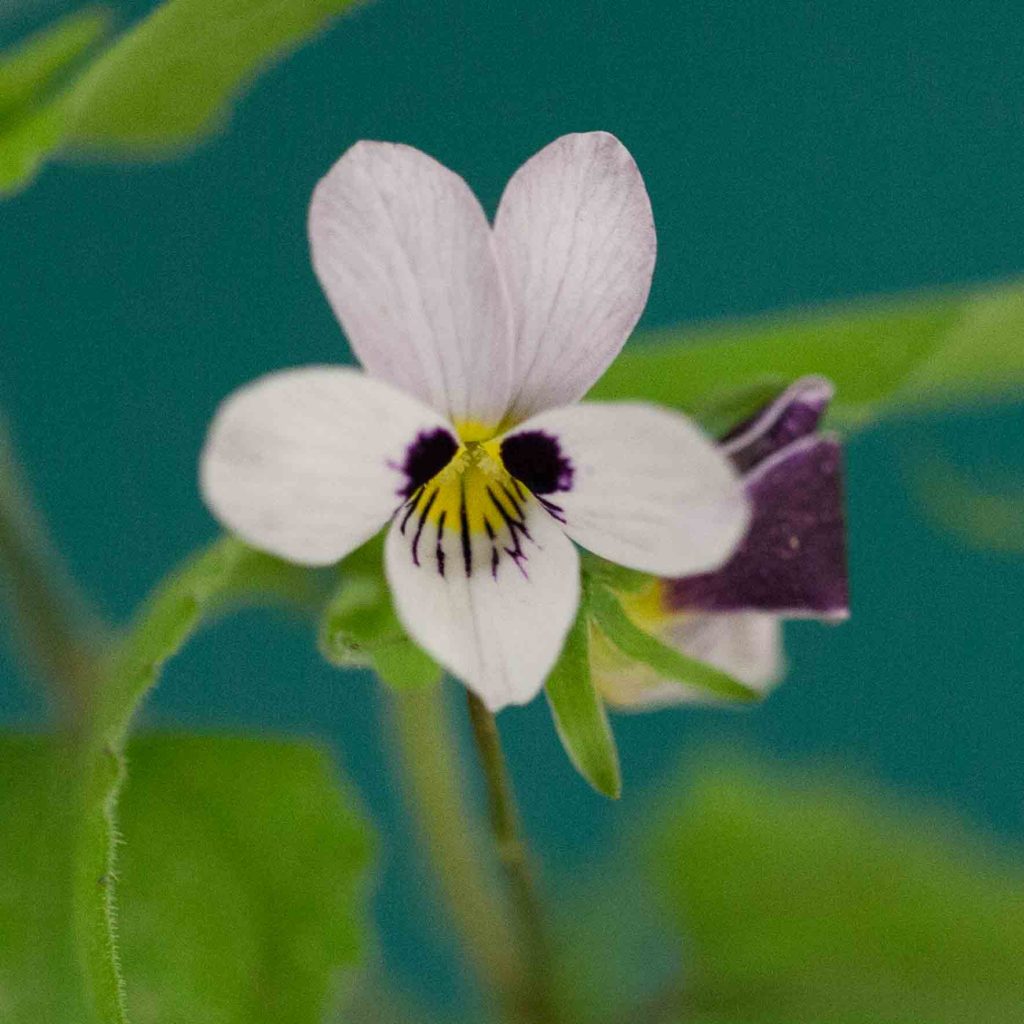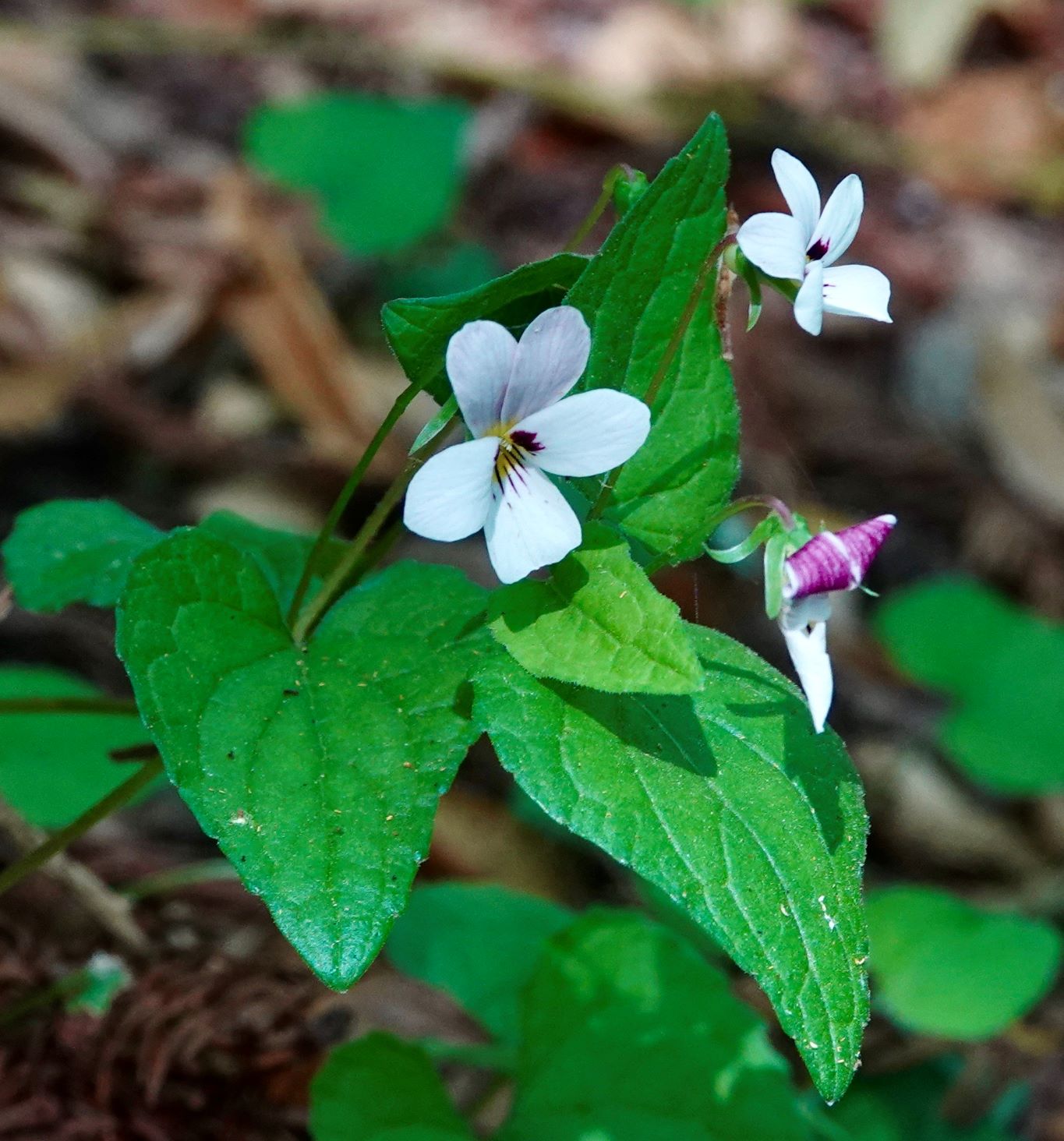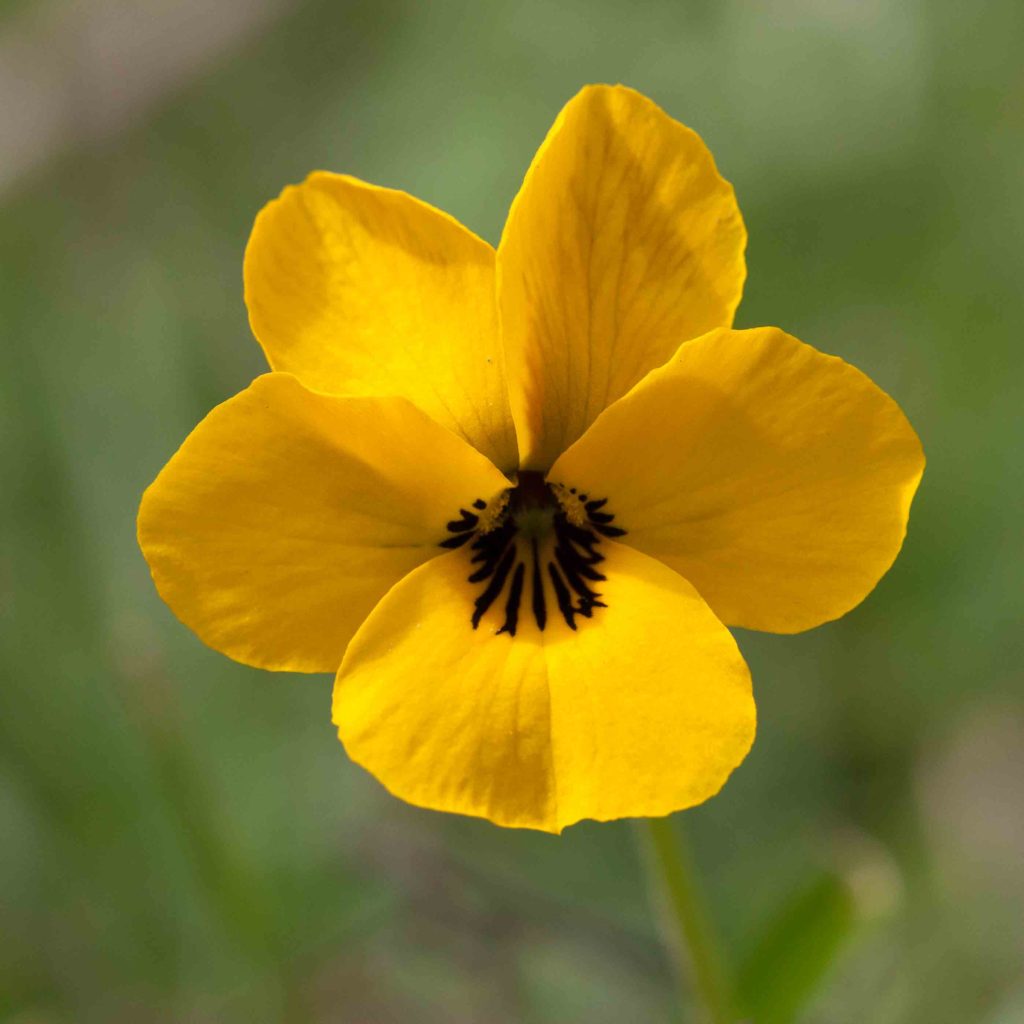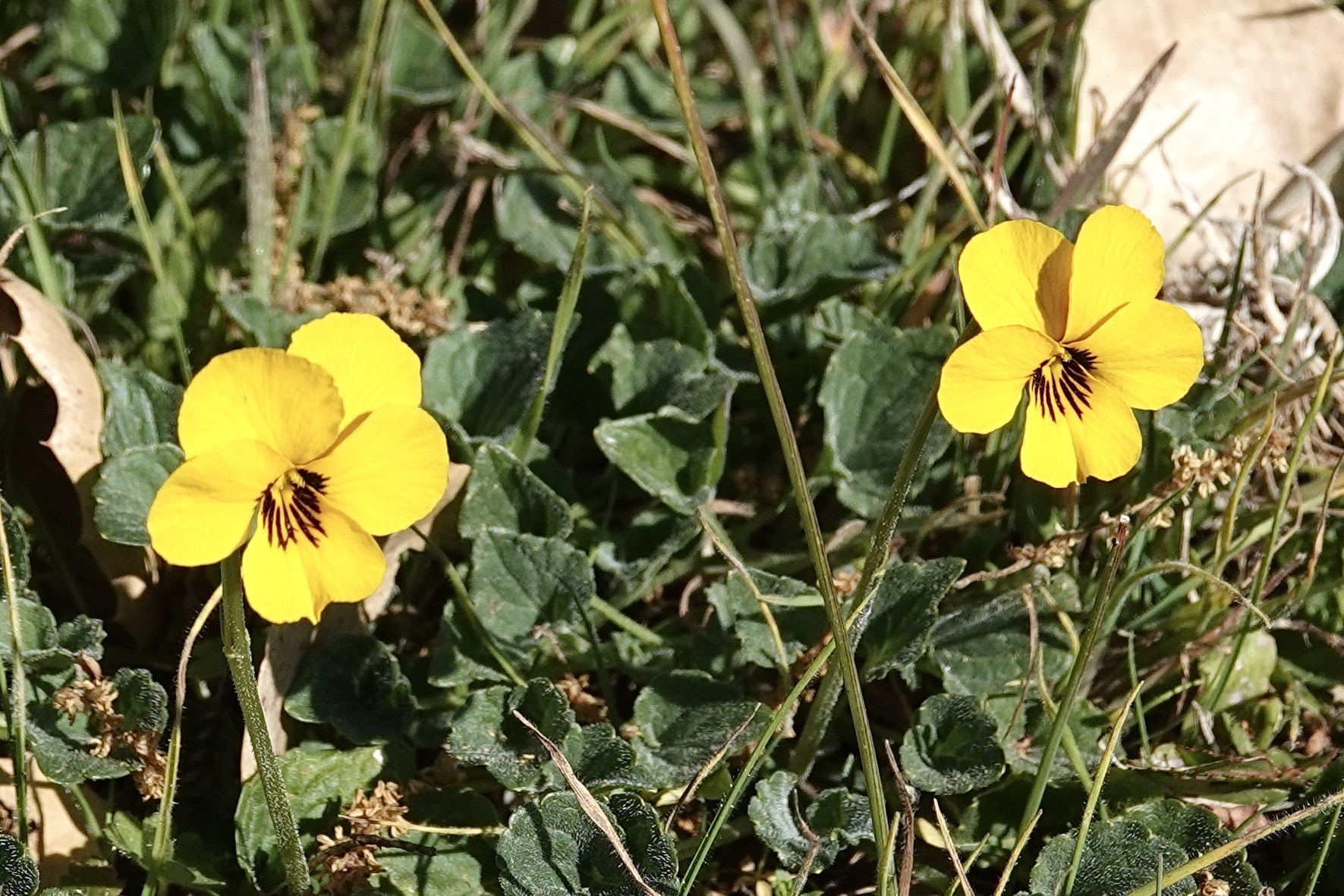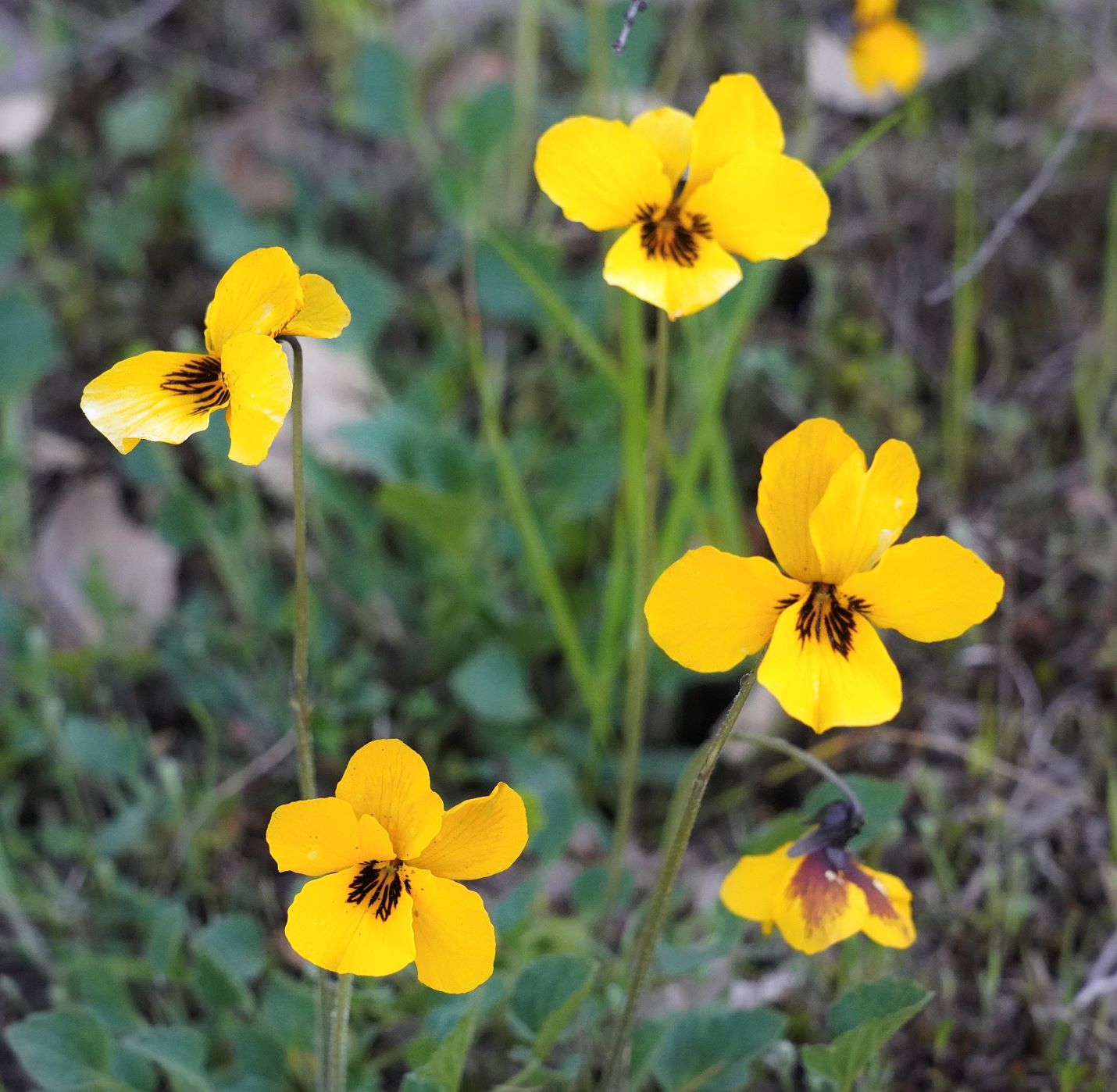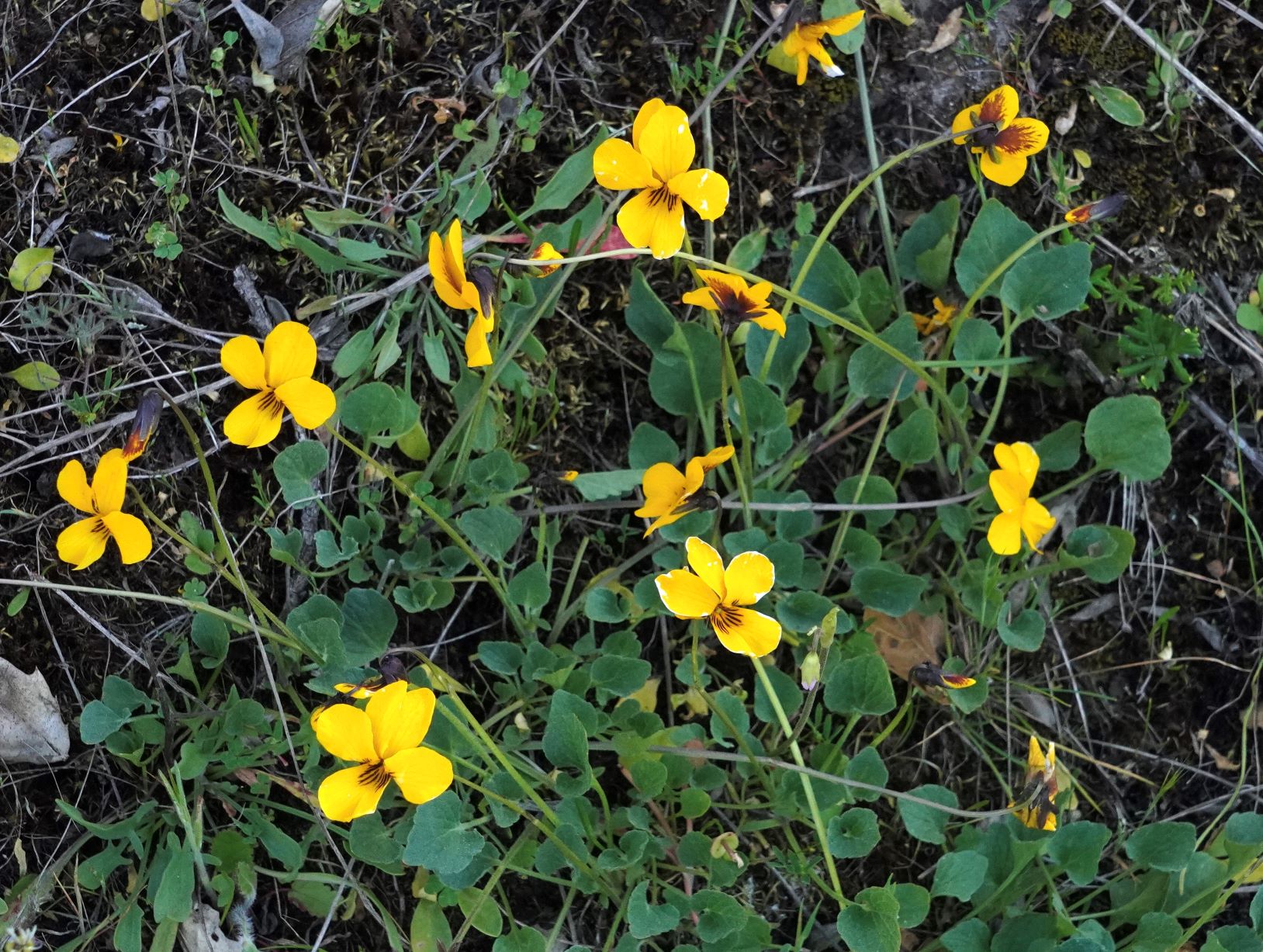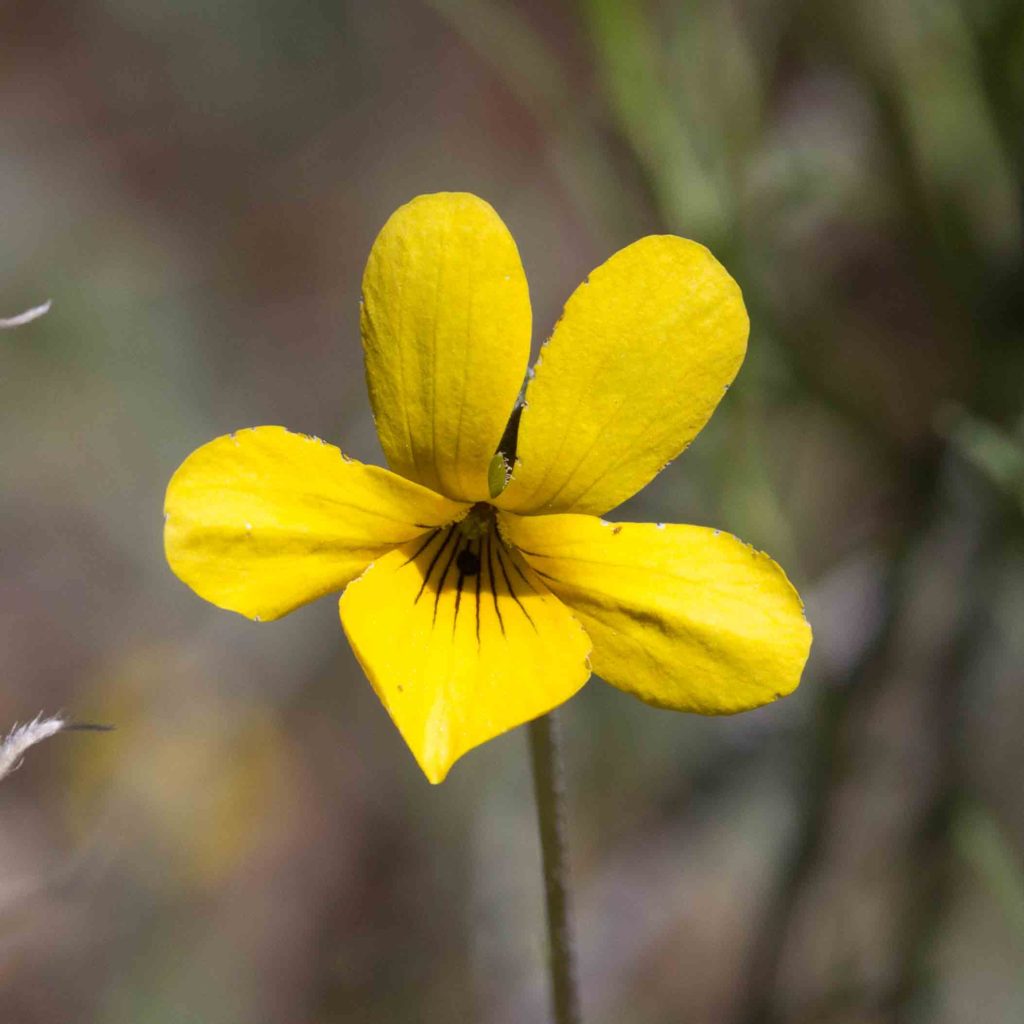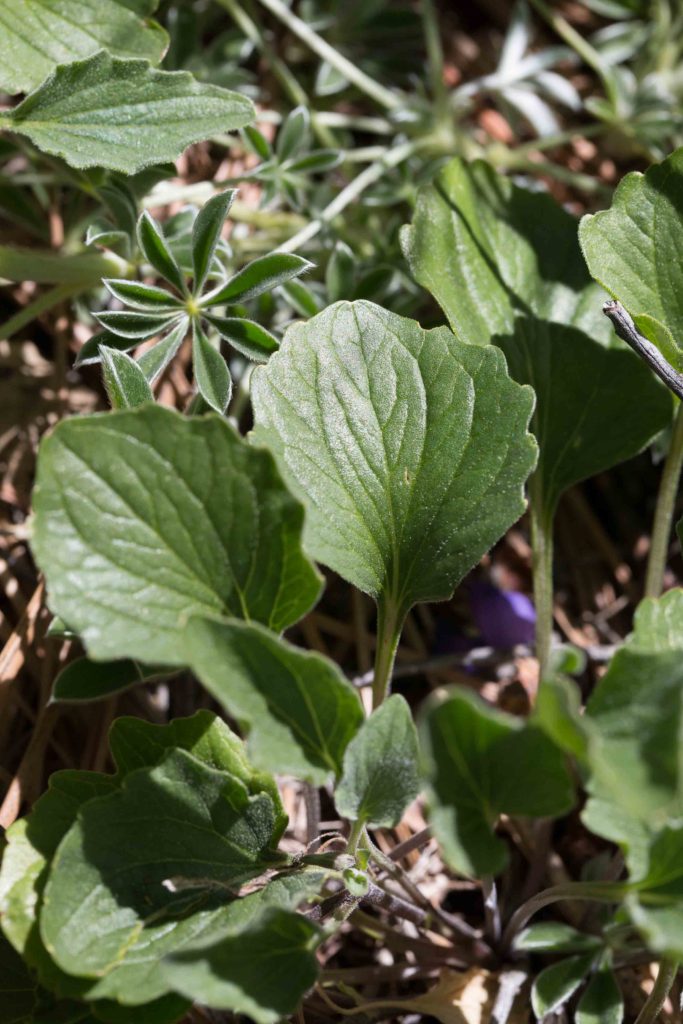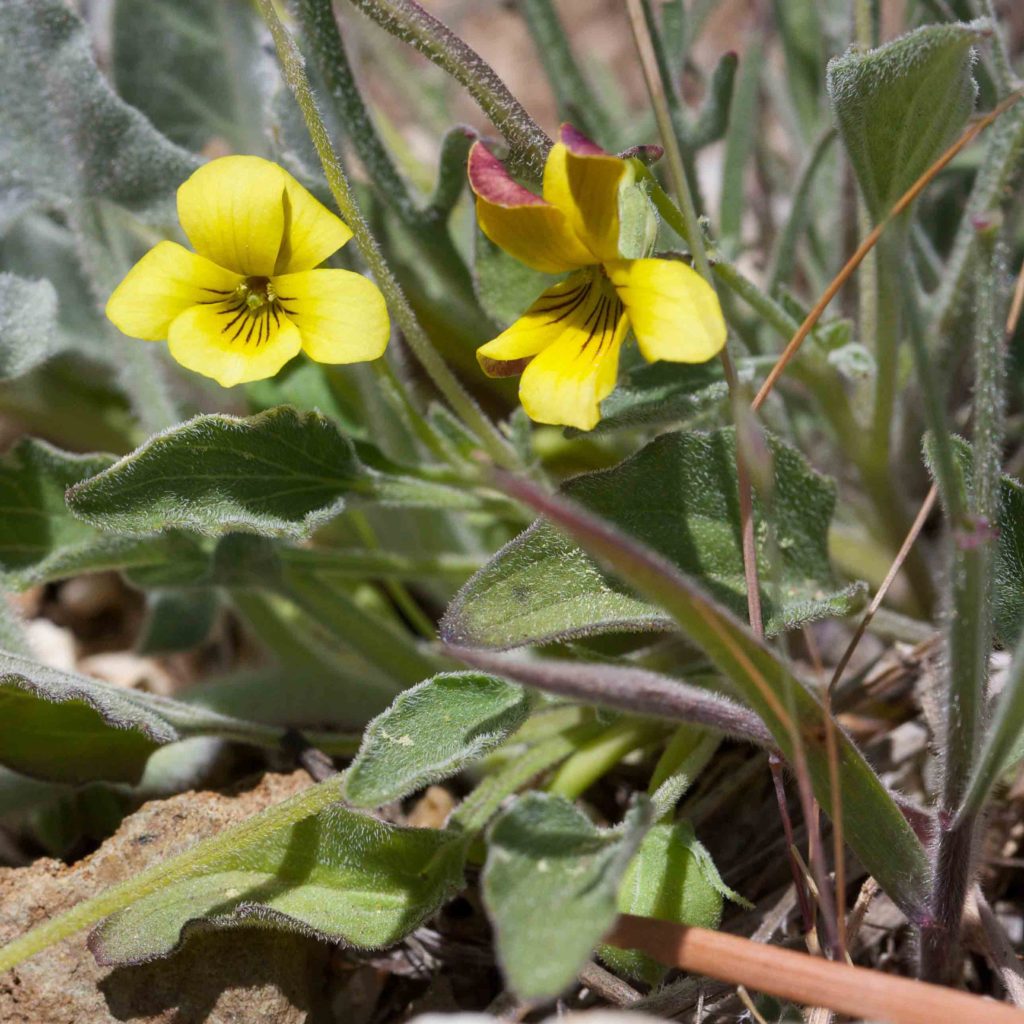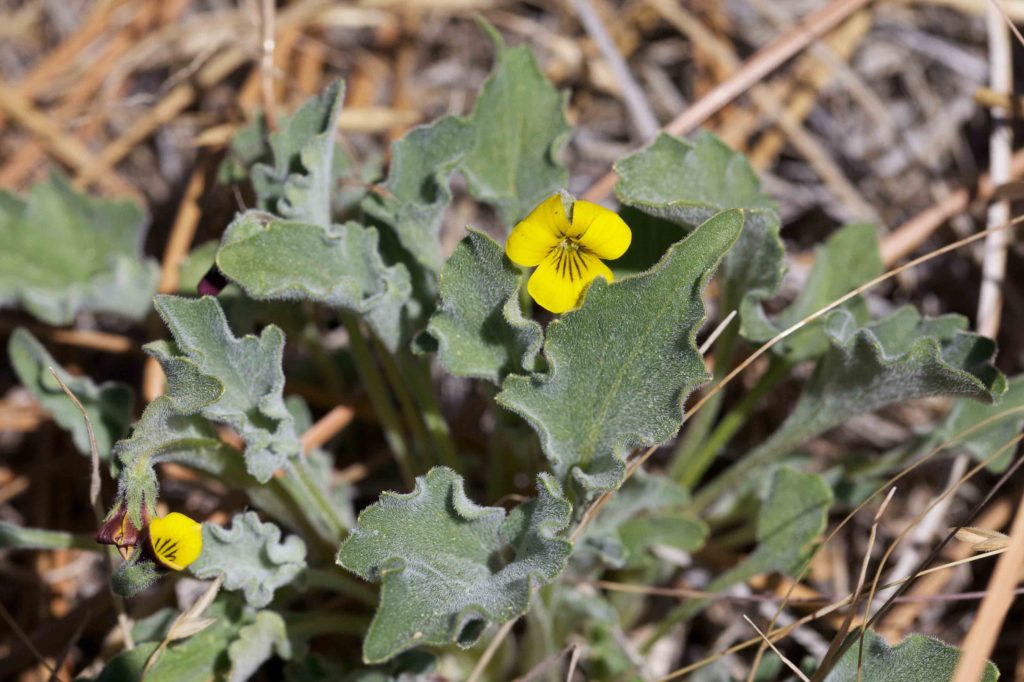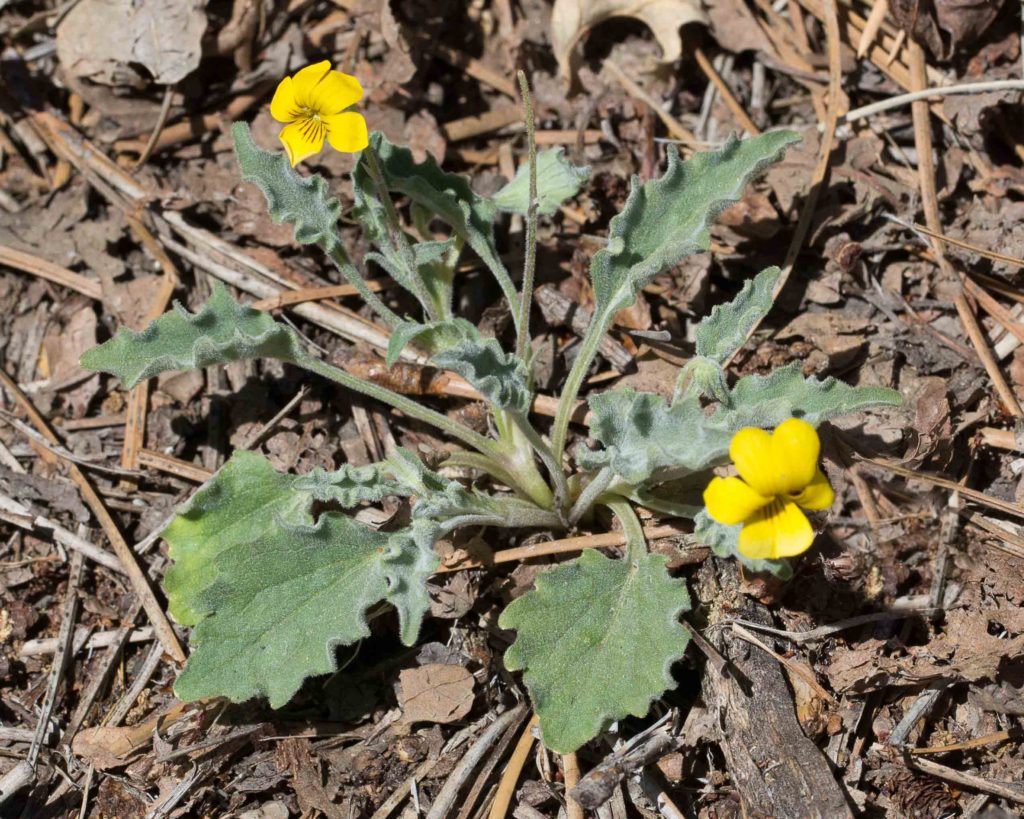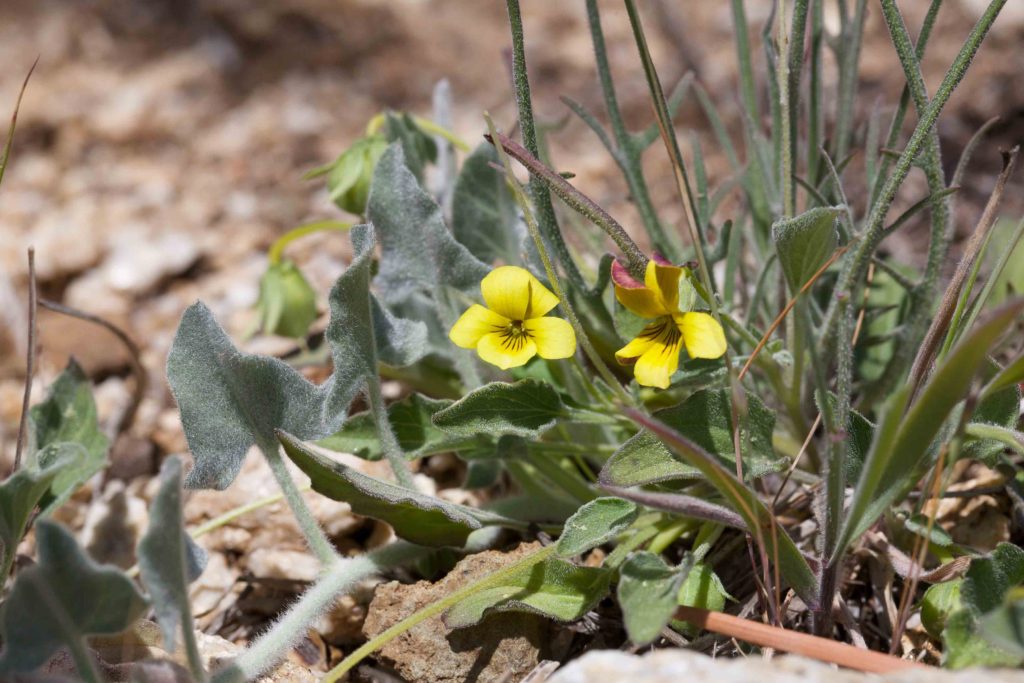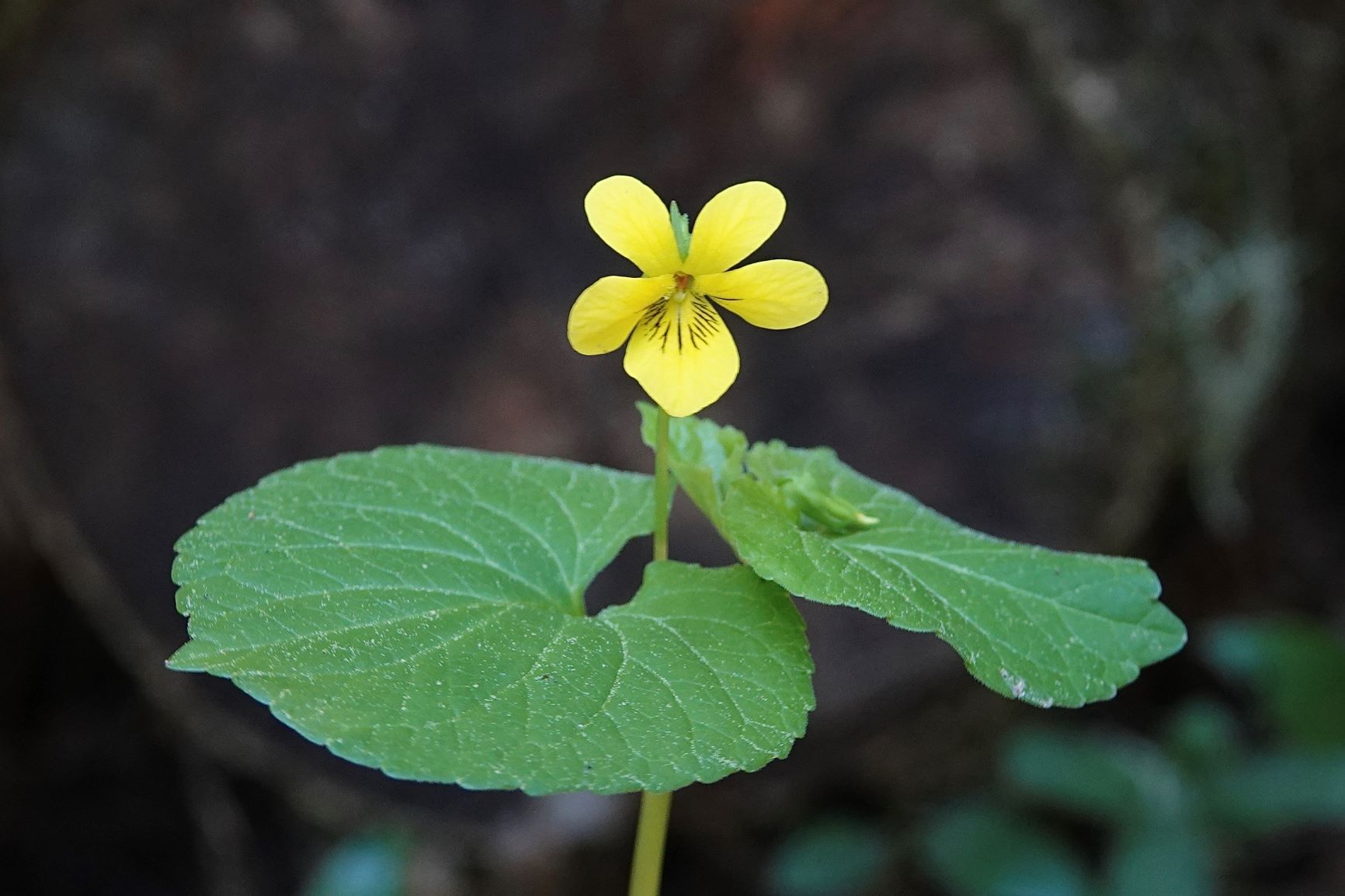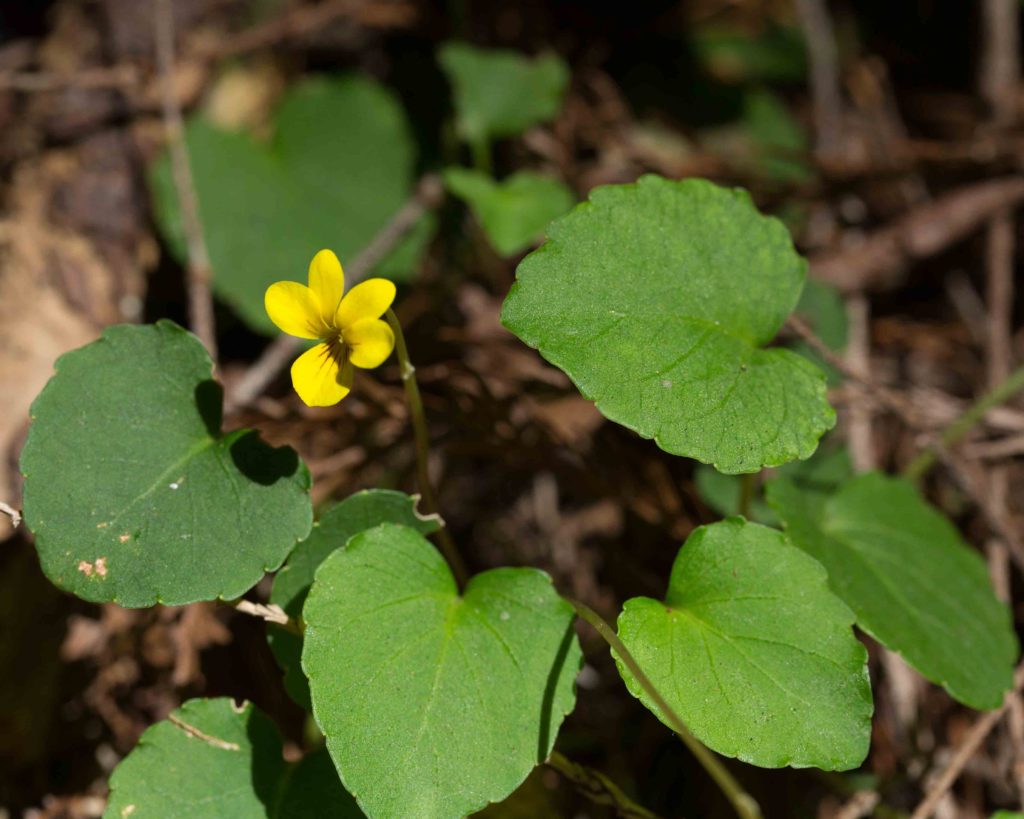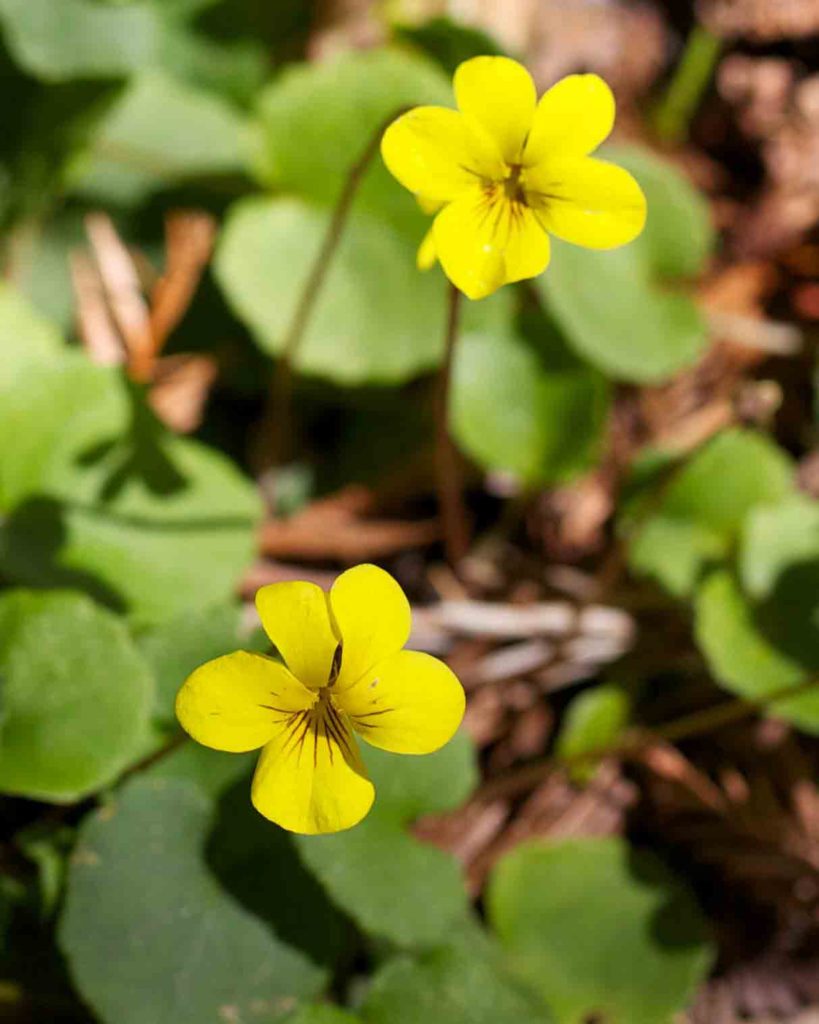Violaceae: Violet Family
Two-eyed Violet – Viola ocellata
Blooms:
Mar–July
Plant Height:
2–37 cm
Flower Size:
Small
Origin:
Native
Habitat:
Grassy banks in pine & redwood forests
Notes:
The face of the flower is white. The upper petals are a dramatic, deep red-violet on the back. The lateral petals have a purple basal blotch, and the lowest petal has a large yellow basal spot, with purple veins. Photo #2 by CJH.
Johnny Jump-up – Viola pedunculata
Blooms:
Feb–May
Plant Height:
5–35 cm
Flower Size:
Medium
Origin:
Native
Habitat:
Open grassland and rocky slopes
Notes:
The yellow-flowered violets are unmistakable, although sometimes tricky to differentiate from each other. This plant is most common in open grassland, where it can be found in extensive colonies. The face of the petals is bright golden-yellow, with dark brown veins at the base of the lowest petal. There are reddish-brown patches on the back of the upper petals. The leaves are cauline only (no basal leaves), including both heart-shaped and spade-shaped forms. The lowest petals are 10–20 mm long, a little larger than those of the Goosefoot Violets (Viola purpurea, see below). Photos #2-4 by CJH.
Goosefoot / Mountain Violet – Viola purpurea subsp. purpurea
Blooms:
Mar–July
Plant Height:
5–35 cm
Flower Size:
Medium
Origin:
Native
Habitat:
Dry grassy or brushy slopes and chaparral
Notes:
This species is distinguished from Johnny Jump-up (Viola pedunculata, see above) by its paler lemon-yellow, slightly smaller flowers (the lowest petal being 6–16 mm long). Like Johnny Jump-up, the face of the petals has dark brown veins at the base of the lowest petal, and reddish-brown patches on the back of the upper petals. A more important difference is that this species has basal leaves. The basal and cauline leaves are different from each other. Basal leaves are generally green, glabrous, sometimes shiny above, sometimes purplish below, roundish with a tapered base, and acute or obtuse tip. Cauline leaves are lanceolate to triangular, with a heart-shaped, truncate or tapered base, and acute tip.
Note: Viola purpurea is a notoriously difficult species. Differentiating between the subspecies is challenging even for experts.
Goosefoot Yellow Violet – Viola purpurea subsp. quercetorum
Blooms:
Feb–July
Plant Height:
5–35 cm
Flower Size:
Medium
Origin:
Native
Habitat:
Dry grassy or brushy slopes and chaparral, generally in yellow pine forest
Notes:
This subspecies is very similar to Goosefoot / Mountain Violet (subsp. purpurea, see above). However, its basal leaves are gray-green, occasionally purple-tinted below, ovate to round in shape, with a base that is heart-shaped, truncate or tapered, and an obtuse tip. Cauline leaves are lanceolate to diamond-shaped, with a generally tapered base and acute tip.
Note: Viola purpurea is a notoriously difficult species. Differentiating between the subspecies is challenging, even for experts.
Redwood / Evergreen Violet – Viola sempervirens
Blooms:
Feb0–Apr
Plant Height:
Prostrate
Flower Size:
Medium
Origin:
Native
Habitat:
Redwood forests
Notes:
The easiest way to recognize this plant is to notice the common name, which shows its location. The flowers are pale lemon-yellow, with dark lines on the lower petal. The green, ovate-to-round leaves are quite distinctive, with their heart-shaped bases and obtuse tips. Photo #1 by CJH.
